Human Orbital Spaceflights
![]()
International Flight No. 47Skylab 4USA |
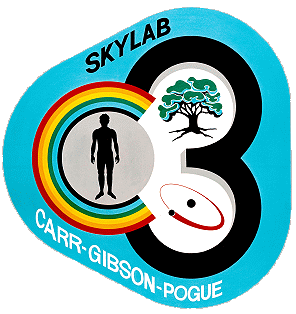 |
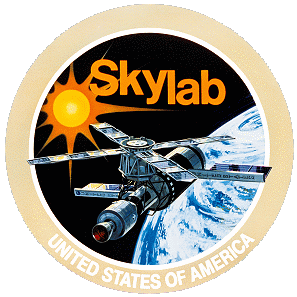 |
![]()
Launch, orbit and landing data
walkout photo |
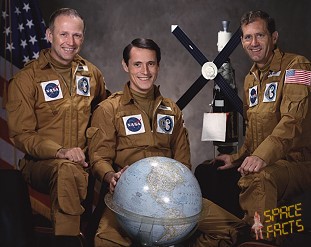 |
||||||||||||||||||||||
alternative crew photo |
|||||||||||||||||||||||
alternative crew photo |
|||||||||||||||||||||||
alternative crew photo |
Crew
| No. | Surname | Given names | Position | Flight No. | Duration | Orbits | |
| 1 | Carr | Gerald Paul "Jerry" | CDR | 1 | 84d 01h 15m 32s | 1214 | |
| 2 | Gibson | Edward George | SPT | 1 | 84d 01h 15m 32s | 1214 | |
| 3 | Pogue | William Reid | PLT | 1 | 84d 01h 15m 32s | 1214 |
Crew seating arrangement
|
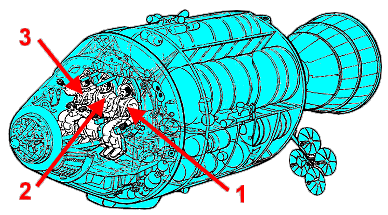 |
Backup Crew
|
 |
||||||||||||||||||||
Support Crew
|
||||||||||||||||
Hardware
| Launch vehicle: | Saturn IB (SA-208) |
| Spacecraft: | Apollo SL-4 (CSM-118) |
Flight
|
Launch from Cape Canaveral (KSC) and
landing 289 km southwest of San Diego in the Pacific Ocean. The Skylab (SL) was a manned, orbiting spacecraft composed of five parts, the Apollo telescope mount (ATM), the multiple docking adapter (MDA), the airlock module (AM), the instrument unit (IU), and the orbital workshop (OWS). The Skylab was in the form of a cylinder, with the ATM being positioned 90 deg from the longitudinal axis after insertion into orbit. The ATM was a solar observatory, and it provided attitude control and experiment pointing for the rest of the cluster. It was attached to the MDA and AM at one end of the OWS. The retrieval and installation of film used in the ATM was accomplished by astronauts during extravehicular activity (EVA). The MDA served as a dock for the command and service modules, which served as personnel taxis to the Skylab. The AM provided an airlock between the MDA and the OWS, and contained controls and instrumentation. The IU, which was used only during launch and the initial phases of operation, provided guidance and sequencing functions for the initial deployment of the ATM, solar arrays, etc. The OWS was a modified Saturn 4B stage suitable for long duration manned habitation in orbit. It contained provisions and crew quarters necessary to support three-person crews for periods of up to 84 days each. All parts were also capable of unmanned, in-orbit storage, reactivation, and reuse. The Skylab itself was launched on May 14, 1973. The Command Module (CM) was a conical pressure vessel with a maximum diameter of 3.9 m at its base and a height of 3.65 m. It was made of an aluminum honeycomb sandwich bonded between sheet aluminum alloy. The base of the CM consisted of a heat shield made of brazed stainless steel honeycomb filled with a phenolic epoxy resin as an ablative material and varied in thickness from 1.8 to 6.9 cm. At the tip of the cone was a hatch and docking assembly designed to mate with the lunar module. The CM was divided into three compartments. The forward compartment in the nose of the cone held the three 25.4 m diameter main parachutes, two 5 m drogue parachutes, and pilot mortar chutes for Earth landing. The aft compartment was situated around the base of the CM and contained propellant tanks, reaction control engines, wiring, and plumbing. The crew compartment comprised most of the volume of the CM, approximately 6.17 cubic meters of space. Three astronaut couches were lined up facing forward in the center of the compartment. A large access hatch was situated above the center couch. A short access tunnel led to the docking hatch in the CM nose. The crew compartment held the controls, displays, navigation equipment and other systems used by the astronauts. The CM had five windows: one in the access hatch, one next to each astronaut in the two outer seats, and two forward-facing rendezvous windows. Five silver/zinc-oxide batteries provided power after the CM and SM detached, three for re-entry and after landing and two for vehicle separation and parachute deployment. The CM had twelve 420 N nitrogen tetroxide/hydrazine reaction control thrusters. The CM provided the re-entry capability at the end of the mission after separation from the Service Module. The Service Module (SM) was a cylinder 3.9 meters in diameter and 7.6 m long which was attached to the back of the CM. The outer skin of the SM was formed of 2.5 cm thick aluminum honeycomb panels. The interior was divided by milled aluminum radial beams into six sections around a central cylinder. At the back of the SM mounted in the central cylinder was a gimbal mounted re-startable hypergolic liquid propellant 91,000 N engine and cone shaped engine nozzle. Attitude control was provided by four identical banks of four 450 N reaction control thrusters each spaced 90 degrees apart around the forward part of the SM. The six sections of the SM held three 31-cell hydrogen oxygen fuel cells which provided 28 volts, two cryogenic oxygen and two cryogenic hydrogen tanks, four tanks for the main propulsion engine, two for fuel and two for oxidizer, and the subsystems the main propulsion unit. Two helium tanks were mounted in the central cylinder. Electrical power system radiators were at the top of the cylinder and environmental control radiator panels spaced around the bottom. This spacecraft was almost identical to the command and service module used for Apollo missions. Modification was made to accomodate long-duration Skylab missions and to allow the spacecraft to remain semi-dormant while docked to the Skylab cluster. A crew of three men and their provisions were carried. The mission of this spacecraft was to ferry a crew of three to the Skylab complex and return them to Earth. This mission carried the third and final crew of the space station Skylab. The crew arrived on Skylab to find that they had company up there - three figures dressed in flight suits. Upon closer inspection, they found their companions were three dummies, complete with Skylab 4 mission patches and name tags which had been left there by Alan Bean, Jack Lousma, and Owen Garriott at the end of Skylab 3. The all-rookie astronaut crew had problems adjusting to the same workload level as their predecessors when activating the workshop. Things got off to a bad start after the crew attempted to hide one astronaut's early space sickness from flight surgeons, a fact discovered by mission controllers after downloading onboard voice recordings. The crew's initial task of unloading and stowing the thousands of items needed for their lengthy mission also proved to be overwhelming. The schedule for the activation sequence dictated lengthy work periods with a large variety of tasks to be performed, and the crew soon found themselves tired and behind schedule. As the activation of Skylab progressed, the astronauts complained of being pushed too hard. Ground crews disagreed; they felt that the astronauts were not working long enough or hard enough. During the course of the mission, this culminated in a radio conference to air frustrations. Following this, the workload schedule was modified, and by the end of their mission the crew had completed even more work than had been planned before launch. The experiences of the crew and ground controllers provided important lessons in planning subsequent manned spaceflight work schedules. The first of four EVAs occurred on November 22, 1973 (6h 33m) by William Pogue and Edward Gibson. Before Skylab was launched, Edward Gibson and William Pogue were to retrieve a meteoroid collector and partially install ATM film during their first EVA, which was to last 2 hours on mission day 4. The EVA actually occurred on mission day 7 and lasted three times as long. The crew refilled the Airlock Module suit cooling system with water prior to the EVA. In addition to carrying out the originally scheduled tasks, William Pogue and Edward Gibson placed the Coronagraph Contamination Measurements experiment on an ATM truss and attempted to photograph Earth's atmosphere using a camera originally intended for deployment from the science airlock blocked by theparasol solar shield. The camera failed after 5 of 40 planned exposures. They also attached the Trans-Uranic Cosmic Ray Experiment detector to the clipboard; pinned open a malfunctioning aperture door; installed space exposure samples; and repaired the Microwave Radiometer/ Scatterometer/Altimeter antenna, which was on the Earth-facing side of station where no EVA handrails or foot restraints existed. The astronauts had difficulty keeping their umbilicals separated. For the second spacewalk Gerald Carr and William Pogue left the station on December 25, 1973 (7h 01m). During this, the longest Skylab EVA, William Pogue and Gerald Carr attached the X-ray/ultraviolet (UV) Solar Photography experiment to the ATM truss. The experiment was originally intended for deployment from the science airlock blocked by the parasol. They also took 40 pictures of Comet Kohoutek; partially replaced ATM film; retrieved space exposure samples; and pinned open another malfunctioning aperture door. The astronauts then returned to the Airlock Module to stowed equipment while Edward Gibson maneuvered Skylab to the proper attitude for far UV comet photography. The astronauts attached the Far UV camera to an ATM truss, took three sequences of 10 photos each, then returned the instrument to the airlock. Finally, they repaired a telescope filter wheel, which involved fine work made challenging by their stiff space suit gloves. The astronauts used a dental mirror and penlight to look into the aperture, then carefully positioned the filter wheel with a screwdriver. Leaking cooling water, colored yellow by chromate corrosion inhibitor, formed ice on the front of Gerald Carr's belly-mounted pressure control unit. The leak lacked sufficient volume to deplete the cooling water supply. Yellow ice flaked off as Gerald Carr moved. The third EVA was performed Gerald Carr and Edward Gibson on December 29, 1973 (3h 29m). The astronauts collected a piece of the Airlock Module meteoroid cover for analysis. They then repeated their Comet Kohoutek observations. During the EVA, ice formed on the front of Gerald Carr's suit because of a cooling water leak. For the final spacewalk again Gerald Carr and Edward Gibson left the station on February 03, 1974 (5h 19m). Originally the Skylab 4 crew was to have undertaken only two EVAs, the last occurring on mission day 54, a few weeks before their return to Earth. The only task slated for the EVA was retrieval of all ATM film. The actual last Skylab 4 EVA, the fourth of the mission, took place on mission day 80, days before the crew's return to Earth, and included 16 tasks. Edward Gibson and Gerald Carr used the backup "clothesline" film transfer device to move film, collectors, and a camera back and forth between the ATM and the Airlock Module. Gerald Carr demonstrated hand over hand movement along a tether. The astronauts completed the Earth atmosphere photography begun on their first EVA by snapping photographs between their ATM film removal tasks. The astronauts then mounted the Micrometeoroid Particle Collection experiment on the ATM. NASA hoped that the experiment could be collected by Space Shuttle astronauts during a Skylab visit in the early 1980s. Edward Gibson's suit cooling system sprang a leak, so he switched to minimum cooling and continued work. At the end of the EVA he reported that he was "tired and hungry." Seven days into their mission, a problem developed in the Skylab attitude control gyroscope system, which threatened to bring an early end to the mission. Skylab depended upon three large gyroscopes, sized so that any two of them could provide sufficient control and maneuver Skylab as desired. The third acted as a backup in the event of failure of one of the others. The gyroscope failure was attributed to insufficient lubrication. Later in the mission, a second gyroscope showed similar problems, but special temperature control and load reduction procedures kept the second one operating, and no further problems occurred. The crew spent many hours studying the Earth. Gerald Carr and William Pogue alternatively manned controls, operating the sensing devices which measured and photographed selected features on the Earth's surface. The crew also made solar observations, recording about 75,000 new telescopic images of the Sun. Images were taken in the X-ray, ultraviolet, and visible portions of the spectrum. As the end of their mission drew closer, Edward Gibson continued his watch of the solar surface. On January 21, 1974, an active region on the Sun's surface formed a bright spot which intensified and grew. Edward Gibson quickly began filming the sequence as the bright spot erupted. This film was the first recording from space of the birth of a solar flare. On December 13, 1973 the crew sighted Comet Kohoutek and trained the solar observatory and hand-held cameras on it. They continued to photograph it as it approached the Sun. On December 30, 1973 as it swept out from behind the Sun The crew also photographed the Earth from orbit. Despite instructions not to do so, the crew (perhaps inadvertently) photographed Area 51, causing a minor dispute between various government agencies as to whether the photographs showing this secret facility should be released. In the end, the picture was published along with all others in NASA's Skylab image archive, but remained unnoticed for years. A new world record for individual time in space was set. Until today it is the longest manned flight of the USA. Massive problems between crew and ground control were reported. It is said, that too much work for the crew might have been the reason and that especially William Pogue suffered from Space Adaptation Syndrome during the first days, which was not correct reported to ground control. The crew was recovered by the USS New Orleans. |
EVA data
| Name | Start | End | Duration | Mission | Airlock | Suit | |
| EVA | Pogue, William | 22.11.1973, 17:44 UTC | 23.11.1973, 00:17 UTC | 6h 33m | Skylab 4 | Airlock Module | A7LB No. 628 |
| EVA | Gibson, Edward | 22.11.1973, 17:44 UTC | 23.11.1973, 00:17 UTC | 6h 33m | Skylab 4 | Airlock Module | A7LB No. 627 |
| EVA | Pogue, William | 25.12.1973, 16:5? UTC | 25.12.1973, 23:4? UTC | 7h 01m | Skylab 4 | Airlock Module | A7LB No. 628 |
| EVA | Carr, Gerald | 25.12.1973, 16:5? UTC | 25.12.1973, 23:4? UTC | 7h 01m | Skylab 4 | Airlock Module | A7LB No. 626 |
| EVA | Gibson, Edward | 29.12.1973, 17:3? UTC | 29.12.1973, 20:5? UTC | 3h 29m | Skylab 4 | Airlock Module | A7LB No. 627 |
| EVA | Carr, Gerald | 29.12.1973, 17:3? UTC | 29.12.1973, 20:5? UTC | 3h 29m | Skylab 4 | Airlock Module | A7LB No. 626 |
| EVA | Gibson, Edward | 03.02.1974, 15:2? UTC | 03.02.1974, 20:3? UTC | 5h 19m | Skylab 4 | Airlock Module | A7LB No. 627 |
| EVA | Carr, Gerald | 03.02.1974, 15:2? UTC | 03.02.1974, 20:3? UTC | 5h 19m | Skylab 4 | Airlock Module | A7LB No. 626 |
Photos / Graphics
 |
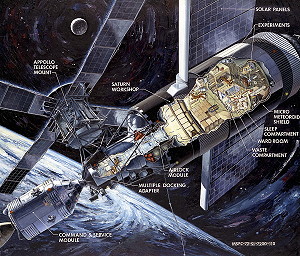 |
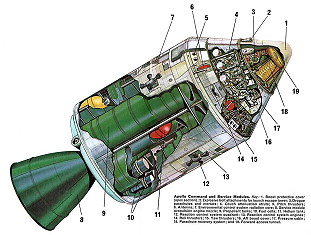 |
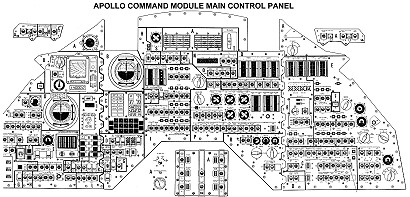 |
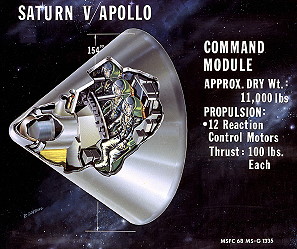 |
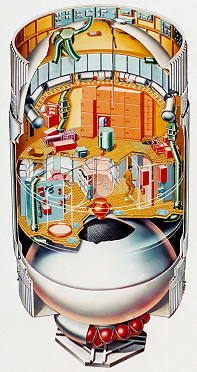 |
 |
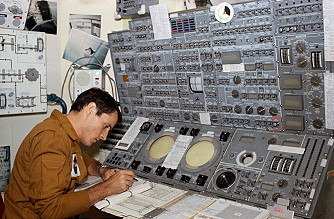 |
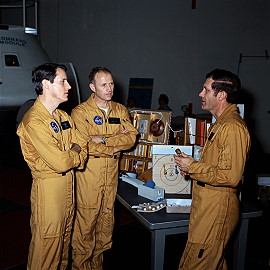 |
 |
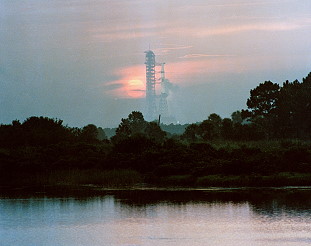 |
 |
 |
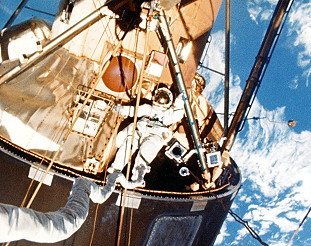 |
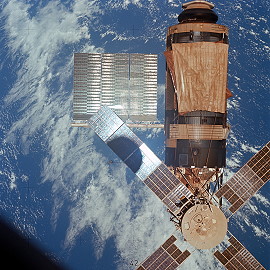 |
 |
 |
 |
 |
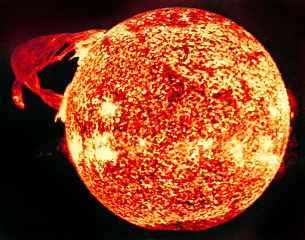 |
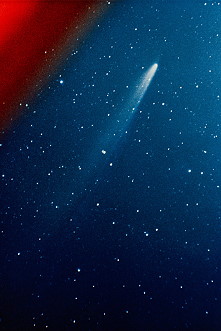 |
 |
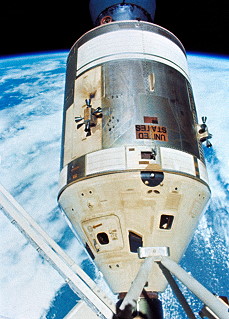 |
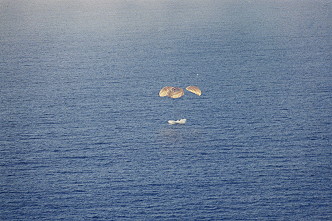 |
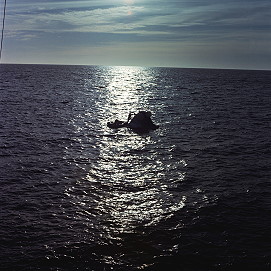 |
|
more Earth observation photos |
|
| © |  |
Last update on August 11, 2020.  |
 |